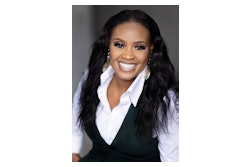I find it interesting that it wasn’t until the issue of race was
introduced in the admission process that [preferences] became ax issue.
It’s not until you talk about race that we’re seeing these kinds of
legal challenges.”
Washington — Affirmative action, racial preferences, and reverse
discrimination seem to be fighting words these days. And while no blows
were struck, panel members duked it out over the impact these catch
phrases will have on students of color at Black Issues in Higher
Education’s video-conference, “Recruitment and Admissions Dilemmas in
Higher Education.”
Moderated by Court TV anchor Carol Randolph, the six-member panel
considered what’s next for students of color in light of court and
voter decisions which have banned the use of racial preferences at
colleges and universities in both California and Texas. The recent drop
in numbers of minority students at campuses in these two states has
those who support diversity concerned about the fate of minority
students across the country.
“The task before colleges and admissions officers has always been
how to balance desires for equity and excellence and how to advance
them both simultaneously,” said Bob Schaeffer, public education
director at the National Center for Fair and Open Testing.
University of Michigan-Ann Arbor Provost Dr. Nancy Cantor countered
that diversity and excellence are not necessarily two different things.
At Michigan, as diversity has gone up, so has excellence, she said.
“Our students of color bring exceptional qualities to our campuses,” Cantor said.
Cantor knows all too well about America’s controversy concerning
racial preferences. Her university is currently the target of
anti-affirmative action activists for its admissions policies.
Nevertheless, she was unyielding in her defense of the need for
diversity on college campuses.
“Our country entrusts our institutions of higher education to
stretch and challenge the minds of undergrads, not to present mirror
images of ourselves,” she said.
According to Cantor, providing diversity on a college campus is, in fact, as necessary as providing classrooms.
“That’s our job. That’s what we are supposed to be doing,” she
said. “We are supposed to be creating the best educational environment
possible for all our students. We contend that diversity is a key
factor in making the most lively and best educational environment.”
Joyce Smith, executive director of the National Association for
College Admission Counseling, said that many admissions considerations
such as alumni connections, student athletics, and musical
accomplishments are rarely questioned.
“I find it interesting that it wasn’t until the issue of race was
introduced in the admissions process that [preferences) became an
issue,” said Smith. “It’s not until you talk about race that we’re
seeing these kinds of legal challenges.”
Representing the anti-affirmative action side was Bradford Wilson,
executive director of the National Association of Scholars. He said
that he supports diversity on college campuses, but doesn’t think that
admissions officers should be able to give a person extra consideration
solely because of his or her race.
“A good number of folks don’t like the idea that because somebody
is Black or Brown he gets plus points in the admissions process.
Whereas if somebody’s skin is Yellow or White, they don’t get those
plus points,” he explained, contending that most individuals who oppose
affirmative action do not have racist motives.
But how then, the question was raised, do African Americans level
out the playing field after centuries of discrimination that has left
them behind?
“One of the things that is going on is that there is a bias in the
American mind, not just in the people who oppose affirmative action,”
responded/Anthony Carnevale, vice president of Educational Testing
Service. Americans believe “that pure competition, the harshest form of
competition, is what develops people — not taking care of them. I
think that’s a false assumption.”
The question that still looms, then, is: If institutions will no
longer be able to consider race in admissions, how will they make sure
that they maintain diverse student populations?
Don Brown, commissioner of the Texas Higher Education Coordinating
Board, brought up another reason why higher education institutions have
a duty to diversify their campuses.
“By 2010, the majority of people in Texas will be Hispanic and
African American,” he said. “If we do not succeed in bringing Hispanics
and African Americans into full participation and success in higher
education, by the year 2020 our average family incomes will be several
thousand dollars lower than they are now. We will have a less educated
population, and we will be less able to engage in full economic
competition with other states.”
COPYRIGHT 1998 Cox, Matthews & Associates
© Copyright 2005 by DiverseEducation.com


















